Deer reveal nature’s secrets across half a century
A 50-year study of red deer on a remote Scottish island is providing new insights into evolution in action and the impact of climate change in the natural world.
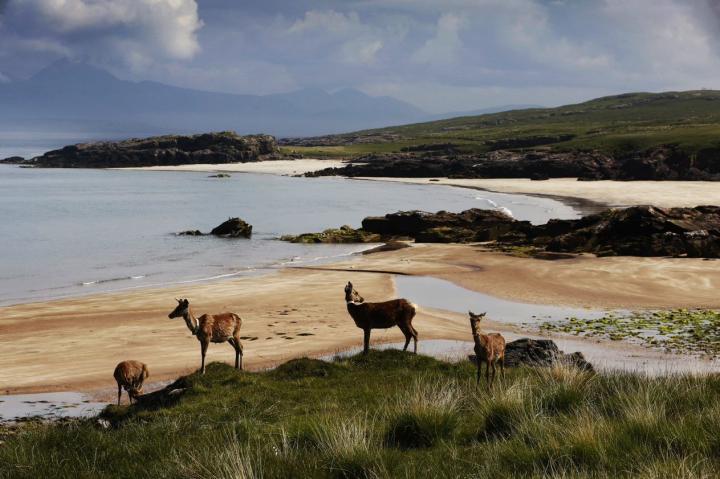
Nestled on the west coast of Scotland, the spectacular island of Rum has long been a haven for wildlife. Known as the jewel of the Inner Hebrides, Rum was designated a National Nature Reserve in 1957. Today its 40 human residents are outnumbered by around a thousand red deer. These deer have made the island world famous. They are part of one of the oldest wildlife studies in the world – the Rum Red Deer Project – which has reached its landmark 50th anniversary. The deer have been the subject of more than 170 scientific papers that have documented ground-breaking insights into the natural world.
Every spring the birth of deer calves draws scientists to the island. A dedicated team sit at lookout points around the study area in the north of the island, which is home to around 250 deer. Equipped with binoculars and telescopes the team patiently monitor pregnant hinds, and look for newborn calves hidden in the grass and heather. Each calf found is tagged, weighed, and sampled for genetic analysis. Every deer in the study area is given a code and then followed closely throughout his or her life. The deer’s lives have also become a focus of educational field trips to the island, and have been featured in TV wildlife documentaries such as BBC’s AutumnWatch.
This level of monitoring is rare: most wildlife projects are short-term field studies that offer only a limited glimpse into the natural world. What makes the deer project on Rum unique is that it provides deeper insights into the ecological and evolutionary processes that allow animals to adapt to their environment. This is only possible through the detailed, long-term study of many individual animals. The project was started by the University of Cambridge in 1972, and has been run from the University of Edinburgh since 2008.
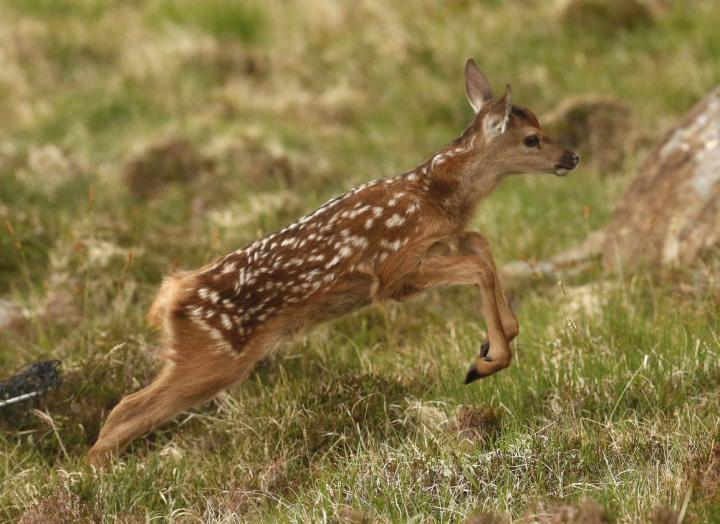
Understanding animal populations
Some of the project’s earliest studies have transformed our understanding of red deer - an iconic species of enormous economic value to Scotland. Scotland has the largest concentration of red deer in Europe, but with no natural predators they need careful management.
The research revealed that differences between males and females have impacts at every stage of their life. The researchers found that the breeding lifespan of males is much shorter than females. In autumn, stags compete with each other through roaring contests and fights to control and mate with harems of females. However, most males are unsuccessful and never have offspring. The few that become prolific breeders, the ‘Monarchs of the Glen’, are rarely successful until they are seven- or eight-years-old and then are only successful for three to four years. A stag’s early life shapes his chances of success - those who are heavier at birth tend to win more fights and have more offspring later in life.
In contrast, females can start breeding aged three and carry on throughout their longer lives. Their success is influenced by their social rank – dominant females have the most offspring. The project also found that during the earliest stages of life, males are at a disadvantage. Male foetuses and calves are less likely to survive if they or their mothers experience stressful conditions, such as adverse weather. Males also place heavier demands on their mothers, who are less likely to breed the following year or indeed survive after rearing a son. Overall, this means that as deer populations grow or adverse weather hits, the proportion of females rises.
These insights have informed deer management practices in Scotland and further afield, allowing managers to adapt their approach to changes in deer populations and the weather conditions. They also help scientists around the world to understand other similar wild animal populations.
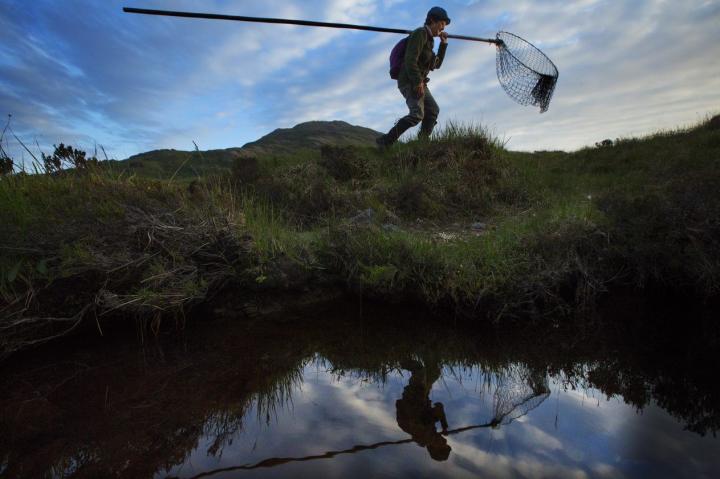
Ageing and health
The project has also revealed important insights into ageing in the wild and the health impacts of parasites.
Until relatively recently, biologists believed the ageing process would be undetectable in the wild, as any loss of performance would lead to the immediate decline and death of an animal. The Rum Red Deer Project was among the first to demonstrate that many aspects of individual performance decline gradually towards a deer’s death. It found that the ageing process is surprisingly complex, and that there are big differences between males and females, with signs of ageing emerging at different times. It also found that females tend to adopt a more solitary life in their advancing years. The researchers now plan to explore why there is such variation as the deer age.
Chronic gut worm parasite infections are common in deer and other wildlife and can have a major effect on breeding success, growth and survival. For example, the project found that heavily infected young deer are less likely to survive to adulthood, and the numbers that survive the first two years of life have a major impact on the population as a whole. The team have also demonstrated that a cost of raising a calf is a rise in parasites in the mother.
Analysis of hormone levels, antibodies, other parasites and bacteria could improve understanding of gut health and how this affects an animal’s survival and success in life. The study is also exploring how isolation and social connections influence health, ageing and many other aspects of the deer’s lives.
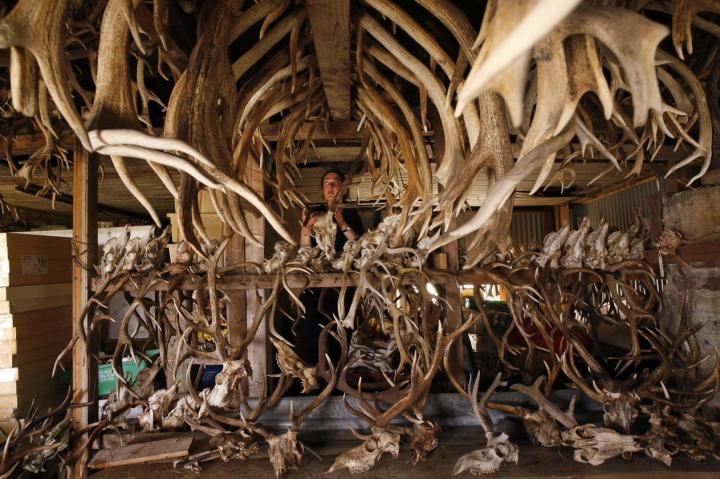
Evolution – survival of the fittest
The project has also given scientists a broader understanding of how evolutionary processes work in wild animals. Over the years, the cornerstone of genetic analysis of tissue samples has revealed how the deer’s genes influence aspects of their lives and how genetic differences influence the whole population.
To gain these insights the team has built a detailed pedigree – a vast family tree that maps the relationships between all the deer since the start of the project. Pedigree information has shown that many different deer characteristics are strongly influenced by genes, including offspring birth weight, antler size, adult body size and the timing of calving and antler shedding.
It also exposed how much inbreeding there is in the population. Although there is little inbreeding between close relatives on Rum, inbreeding between distant relatives is common. This is important because highly inbred offspring have a drastically lower chance of survival. The study also found that the inbred animals that do survive to adulthood have fewer surviving offspring compared with others. The deer population on Rumis not in danger from these levels of inbreeding, but the results are important for conservationists managing populations of endangered wild animals elsewhere.
The methods the project team developed to identify paternity have proved influential worldwide. They have led to the development of CERVUS and SEQUOIA, two of the most widely used parentage identification programs in wild animals. In endangered wild animal populations, management and conservation efforts hinge on the use of parentage analysis to design effective breeding programs that avoid inbreeding. The programmes are also used extensively in livestock breeding programmes.
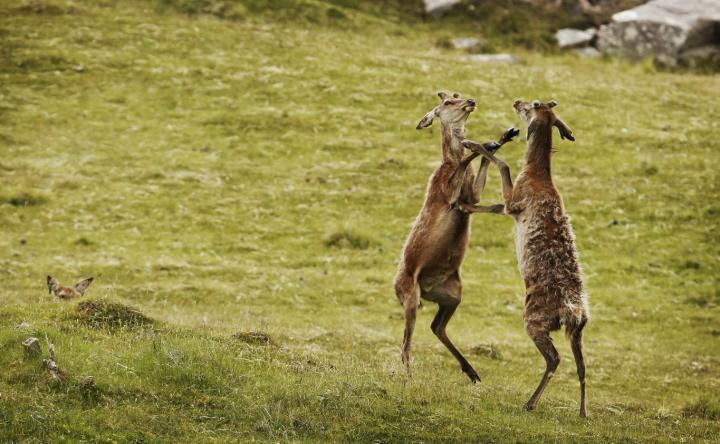
Climate change
At the start of the project in the 1970s, one avenue of research that could not have been predicted was the impact of the speed and scale of global climate change. Understanding how animals are affected by climate change will be crucial to protect them.
Analysis of nearly thirty years of data from Rum revealed dramatic changes in the timing of key life events. Warmer spring temperatures result in deer conceiving and giving birth earlier. Calves are now born on average almost twelve days earlier compared to the 1980s. Some of this is due to individuals responding to better summer conditions within their own lifetimes – this is known as phenotypic plasticity. But the results also revealed that the population’s genetics are shifting towards earlier breeding - a rare example of evolution of action. Climate change has also shifted the timing of the rut and antler cleaning and casting.
It is unclear how the timing of these key events might affect the population in the long term. While animals may be able to partially adapt via plasticity or evolutionary change, the effects of climate are so complex and far reaching that even the most adaptable populations will be challenged.
Only long-term projects like Rum can reveal how climate change will ultimately affect animals. While many studies have documented changes in wild animal populations, very few have the ability to explore the underlying mechanisms. This vital work, which could help safeguard animal populations in the future, will be an important part of the project’s future research.
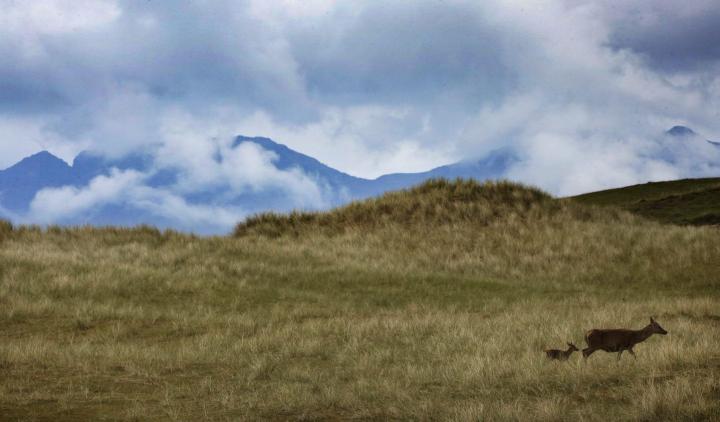
Looking to the future
It would have been difficult to predict at the start of the project its many insights and impacts. The project has evolved alongside the deer, taking advantage of new approaches and technologies to answer ever more sophisticated questions about the natural world. As the data builds, so too does its potential. New technologies will further increase the project’s value.
Machine and deep learning could allow detailed insight into the deer’s social behaviour through analysis of videos, photos and acoustic data. Low-level drones and satellite data may reveal in unprecedented detail how animals’ behaviour changes in response to their environment. Whole genome sequencing may reveal more about the genetic changes taking place. Pooling data with other long-term studies and using more advanced genetic analysis techniques will also help to answer challenging evolutionary questions. In the future, these insights will be a vital tool in understanding and protecting our rapidly changing natural world.
Photo credit: Murdo MacLeod
Related Links


